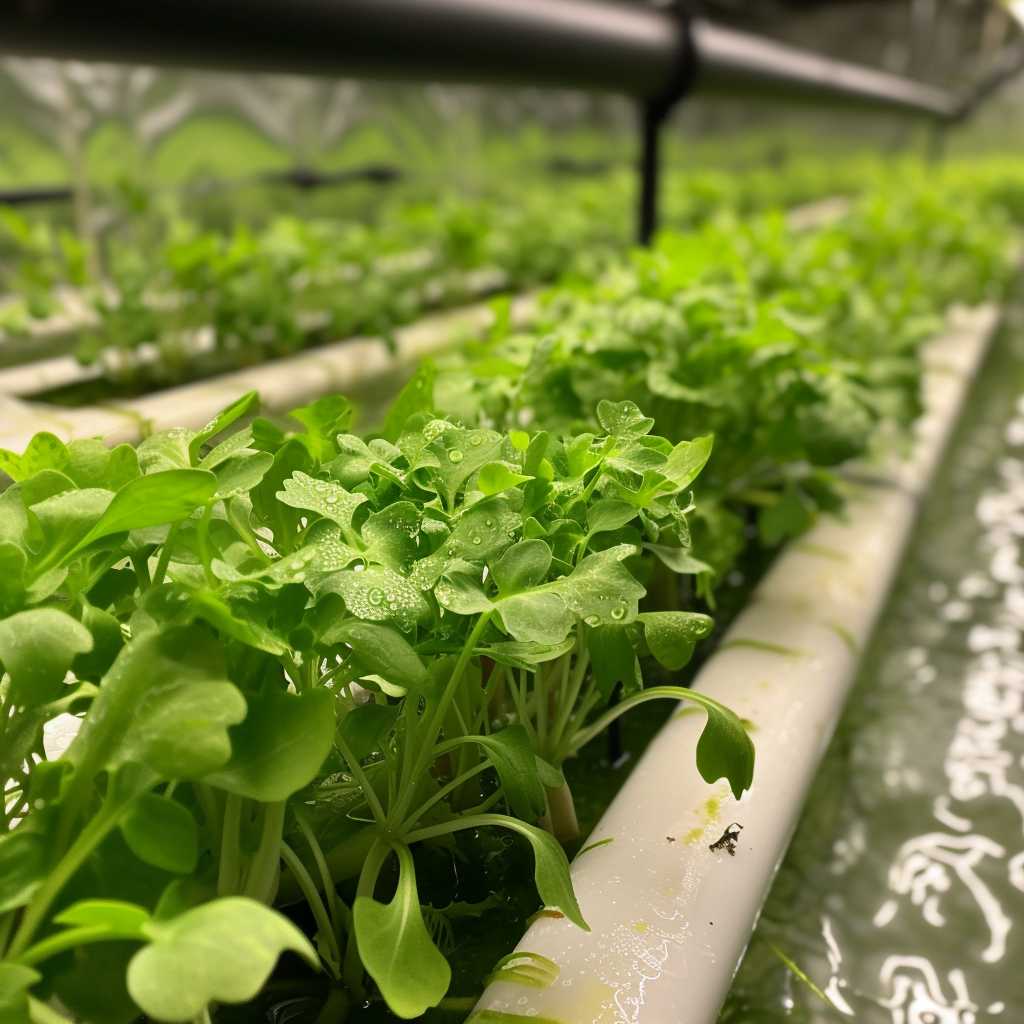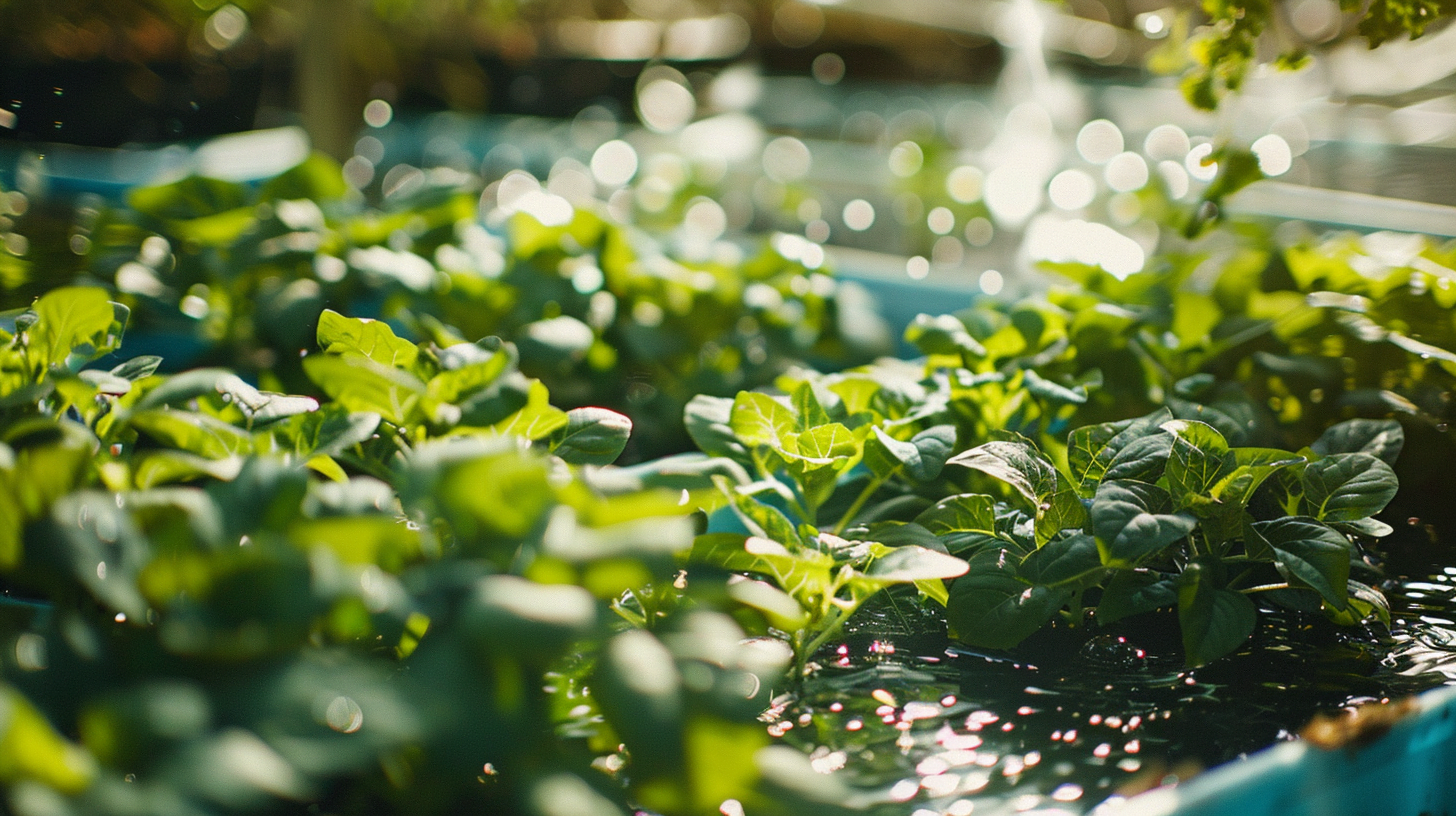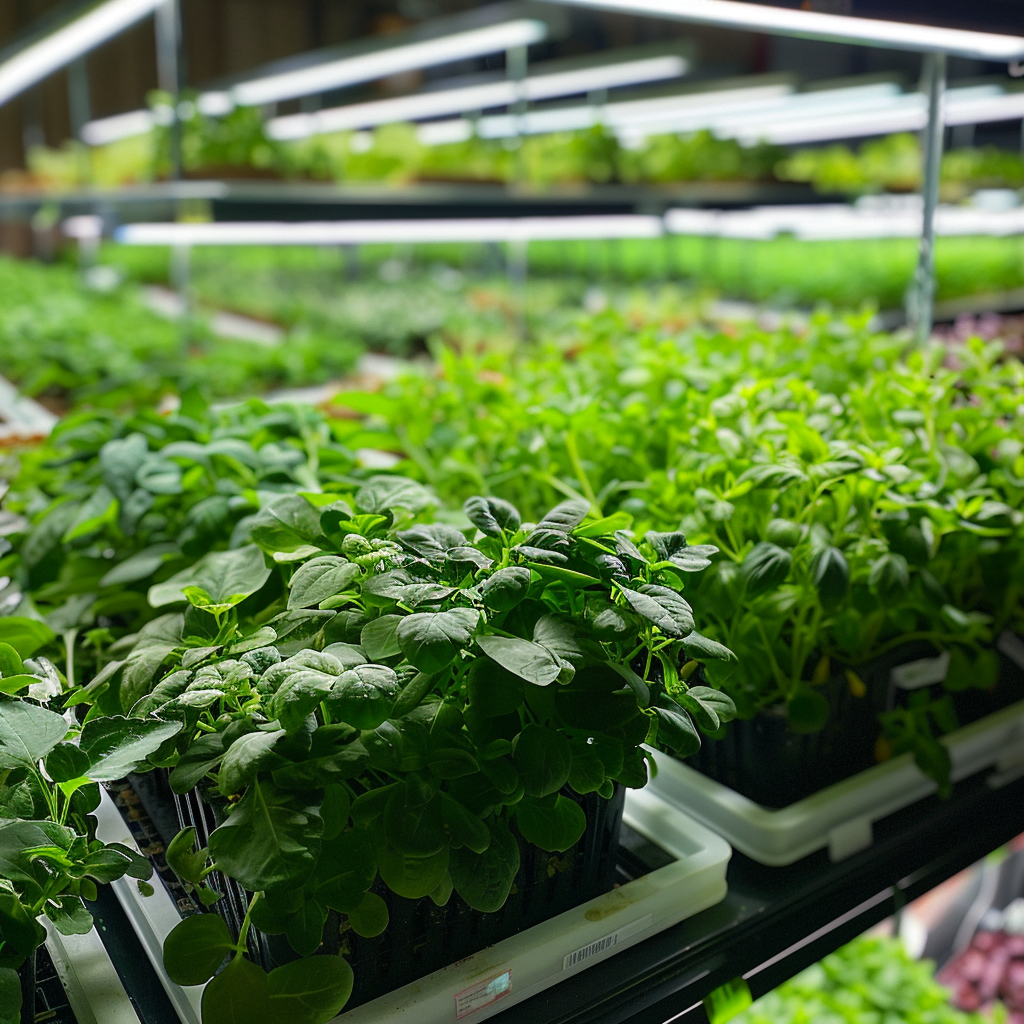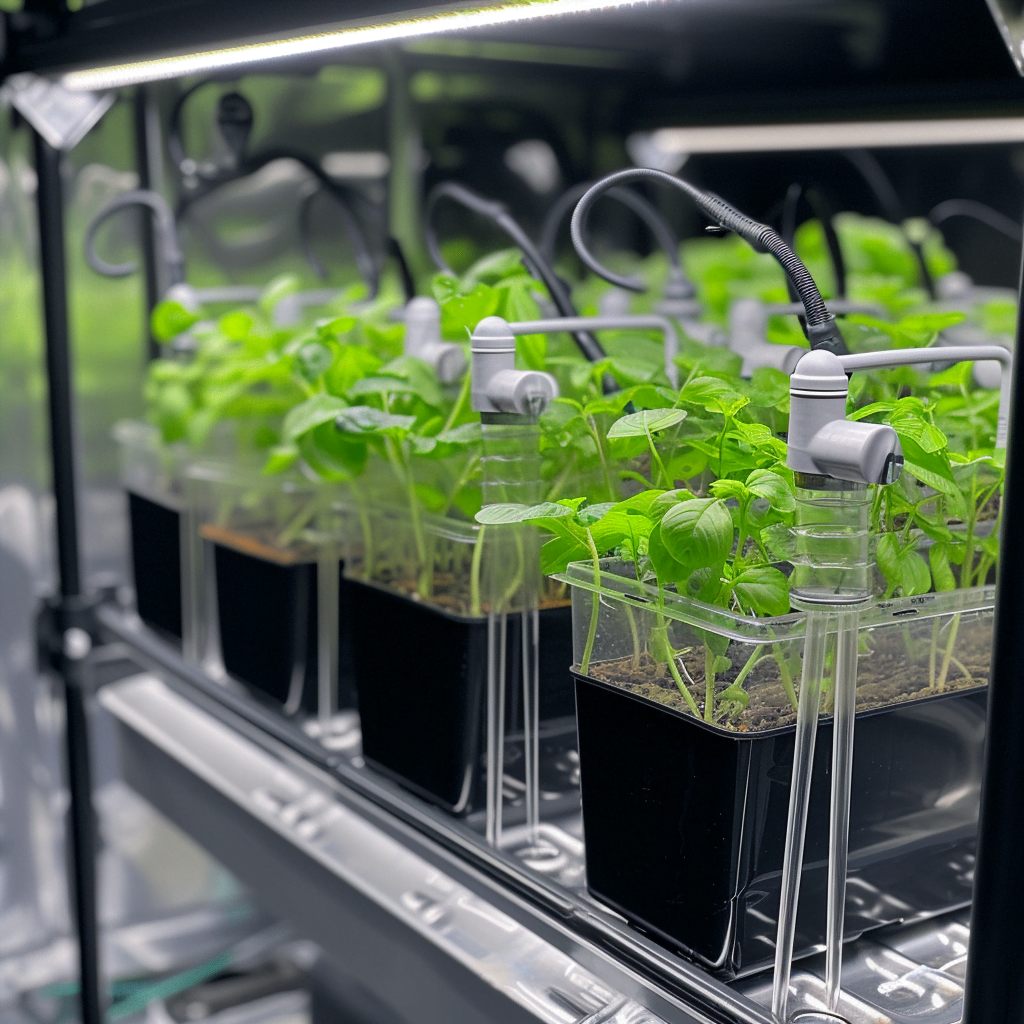How does deep water culture hydroponics work? This comprehensive guide will explain everything you need to know about deep water culture, or DWC, systems. DWC is a hydroponic method where plant roots are suspended directly in an oxygenated nutrient solution for rapid growth rates. With deep water culture, plants receive constant access to water, nutrients, and air right at the roots.
Deep water culture was developed in the 1970s as a way to maximize plant growth in areas with poor soil. It has since become a popular hydroponic growing method for its space efficiency, fast harvests, and high yields of greens, vegetables, and herbs. Home gardeners and commercial growers alike appreciate how DWC gives plant roots the ideal moisture, nutrition, and oxygenation needed for rapid, vigorous performance.
By suspending plants in net pots above a reservoir of circulating, nutrient-rich water, DWC allows the entire root zone constant contact with everything it needs. Aeration pumps enrich the water with dissolved oxygen to stimulate root and plant development. Clear reservoirs make it simple to monitor conditions.
This comprehensive deep water culture hydroponics guide will teach you how to harness the rapid growth of DWC for your own high-yield garden. Let’s explore how deep water culture systems work so you can start growing!
What is Deep Water Culture Hydroponics?
Deep water culture, also known as the reservoir method, is a hydroponic technique where plant roots are suspended in a reservoir of oxygenated nutrient solution. No medium such as perlite or clay pebbles is used to support the roots. The roots dangle freely in the nutrient-rich water, which allows them constant access to water, nutrients, and oxygen.
DWC was first developed in the 1970s at the University of Arizona as a way to grow crops in areas with poor soil quality. Researchers were looking for methods to increase food production in areas where water was scarce. They found that by suspending plant roots directly in nutrient-rich water, growth rates could be dramatically increased while using a fraction of the water needed for soil farming.
Since its development, DWC has become a popular hydroponic growing method for home and commercial use. It offers a high-performance, high-yield growing system that can be scaled up or down as needed. The key advantages of DWC are:
- Rapid growth rates up to 2-3 times faster than soil gardening
- High oxygen levels promote healthy roots and nutrient absorption
- Easy monitoring of roots and nutrient levels through the clear reservoir
- Less growing medium needed compared to other hydroponic systems
- Constant access to water and nutrients maximizes plant growth
- Closed reservoir helps reduce risks from diseases, pests, and contaminants
DWC differs from other common hydroponic techniques like NFT (nutrient film technique) and aeroponics in that the plant roots are fully immersed in the water rather than misted or spread across a medium. This allows the entire root system to benefit from the oxygenated water.
How Does a Deep Water Culture System Work?
A deep water culture hydroponic system has four main components:
- Reservoir – Usually a plastic tank or bucket that holds the nutrient solution. It should be opaque to block light and prevent algae growth. Reservoirs come in many sizes from 5 gallons up to hundreds of gallons for commercial systems.
- Air pump – Provides oxygenation and circulation of the nutrient solution. The air pump is connected to tubing that leads to an air stone or bubbler placed in the bottom of the reservoir. Choose a pump with enough lifting power for the size of your reservoir.
- Air stone – Diffuses the air from the pump and creates bubbles in the water. The rising bubbles help oxygenate the solution. Use a large air stone or multiple stones for maximum oxygenation.
- Grow medium – An inert medium like perlite, clay pellets, or Rockwool that supports the plant above the reservoir. The medium helps stabilizes seedlings but roots will dangle freely.
The basic DWC setup is simple:
- Fill reservoir with nutrient solution to a set level. The solution should contain essential minerals for growth. Maintain pH between 5.5-6.5.
- Place air stone connected to pump at bottom to oxygenate the solution. Bubbles help roots access oxygen.
- Suspend plants above reservoir in net pots or collars with grow medium. Plant stems and leaves sit above the waterline.
- Ensure plant roots dangle freely in the water. Roots grow quickly with constant access to nutrients.
- Top up nutrient solution as needed. Add fresh solution to replace any lost to plant uptake and evaporation.
This allows the roots constant access to water, nutrients, and air for rapid growth. The bubbles provide dissolved oxygen to the roots while the solution gives them a balanced supply of nutrients.
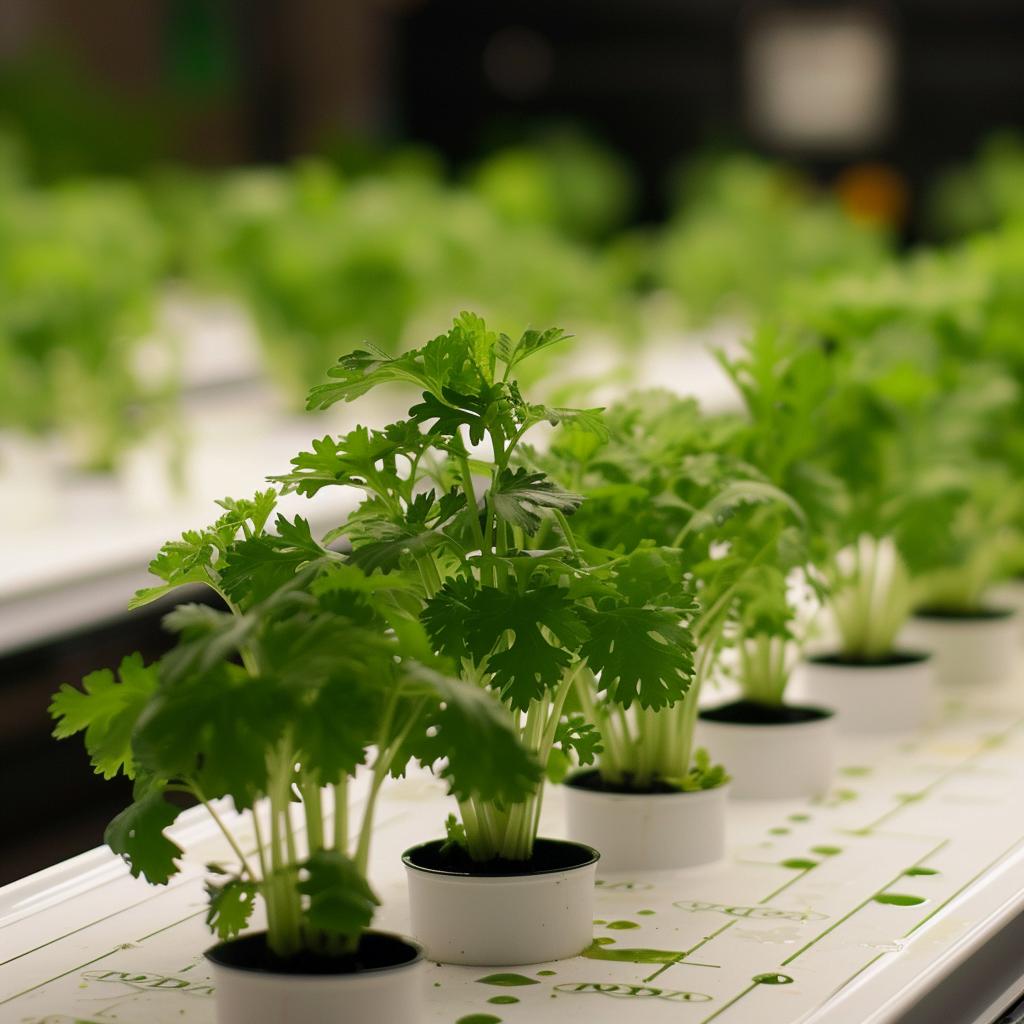
Growing Plants in a Deep Water Culture System
Many types of plants can thrive in DWC systems. Some top choices include:
- Lettuce – Grows quickly with high nutrient demand. Mature rapidly in DWC systems.
- Tomatoes – Require continuous nutrients and do well with abundant oxygen to roots.
- Peppers – Produce heavily with adequate nutrients and oxygenation from DWC.
- Cucumbers – Fast growing and benefit from constant access to water and nutrients.
- Herbs – Most herbs grow vigorously and appreciate the aeration of DWC solutions.
- Strawberries – Grow well suspended in DWC systems and produce sweeter berries.
- Flowers – Varieties like gerbera daisies, chrysanthemums, and orchids grow beautifully with DWC methods.
Start seeds or cuttings in a small growing medium like Rockwool or Oasis cubes. Place under grow lights until sprouted and roots are emerging. Once the plants have established some roots, transplant them into the larger DWC grow medium in net pots suspended over the reservoir.
Make sure the water level covers the lower portion of the plant roots but does not completely submerge the entire grow medium. This allows both water and air access. Maintain the reservoir water temperature between 65-75°F to prevent root disease. The dissolved oxygen levels should be 5-7 ppm.
Check pH and nutrient levels in the reservoir regularly. Top up the reservoir with fresh nutrient solution as needed. Target 14-18 hours of grow light per day for optimal results. LED lighting works well for DWC systems.
The Benefits of Using Deep Water Culture Hydroponics
DWC offers several advantages over soil gardening and other hydroponic systems:
- Rapid growth – Constant access to water and nutrients results in growth rates up to 2-3 times faster than soil. Plants get everything they need right at the roots.
- High oxygen levels – Continuous aeration from the air pump provides excellent oxygenation for healthy roots. Well-oxygenated roots absorb nutrients better.
- Easy monitoring – Clear reservoir allows easy visual inspection of roots and nutrient levels. Monitor root health and growth.
- Space efficiency – Plants can be set up in vertical systems to maximize space. Grow more in less square footage.
- Less disease/pests – Closed reservoir helps reduce risks compared to soil. No soil pests/pathogens to spread disease.
- Constant conditions – Nutrient levels, pH, and temperature can be regulated more easily than soil. Roots always stay in optimal zone.
- Higher yields – The combination of fast growth, good oxygenation, and steady nutrients boosts productivity.
- Lower water usage – DWC systems use about 1/10 the water of conventional farming per pound of produce.
- Works anywhere – DWC systems allow food production anywhere, from deserts to apartments. No need for fertile farmland.
Potential Challenges with Deep Water Culture Systems
While DWC offers many benefits, potential challenges include:
- Water temperature – If reservoir gets too warm, root rot can develop from lack of oxygen. Keep water between 65-75°F with good circulation.
- Power outages – During outages, air pump will stop and roots can be damaged without oxygen. Use backup air pump/batteries if possible.
- pH fluctuations – pH tends to increase over time as plants use nutrients. Monitor and adjust pH down regularly.
- Algae growth – Exposed reservoirs can grow algae. Use opaque reservoirs and keep grow lights off reservoir.
- Clogged air pumps – Mineral deposits can clog air stones. Clean/replace air stones and use filtered water if needed.
- Equipment failures – Like all hydro systems, DWC depends on pumps, air stones, and other equipment working properly. Have spare parts available.
- Nutrient imbalances – An excess or deficiency in nutrients can cause issues. Test levels regularly and refill with a complete solution.
With proper operation and maintenance, these challenges can be minimized or avoided. Cool reservoirs, backup systems, regular testing, and cleaning of equipment are good practices for smooth DWC operation.
Designing and Operating a Deep Water Culture System
When designing and operating a DWC system, follow these guidelines for best results:
- Use an opaque reservoir between 10-20 gallon capacity for a starter system. Scale up reservoir size as needed.
- Position air stone(s) to maximize water circulation and oxygenation.
- Pick plants suited to constant moisture and high nutrients like tomatoes, greens, peppers, and herbs.
- Let seedlings establish roots before moving to the DWC system. Give 2-3 weeks after germination.
- Suspend plants above reservoir using pots/collars filled with perlite, clay pellets, Rockwool chunks, or LECA.
- Start with a nutrient solution of 500-800 PPM strength and adjust as plants grow.
- Change reservoir solution every 1-2 weeks to replenish nutrients and prevent salt buildup.
- Add beneficial bacteria or Hydroguard to solution to prevent root issues.
- Check pH every 2-3 days and adjust between 5.5-6.5 range if needed.
- Monitor roots for slime/rot and troubleshoot if found.
Nutrient Solutions for Deep Water Culture Systems
The nutrient solution provides all the essential elements that plants need to thrive in a hydroponic system. For DWC, you’ll need a complete mineral nutrient formula suitable for the vigorous growth and high oxygen environment.
Most hydroponic nutrient solutions come as a two-part base formula that is mixed with water. Look for a balance of macronutrients (N, P, K, Ca, Mg, S) and micronutrients (Fe, B, Mn, Zn, Cu, Mo, etc.). Formulas meant for lettuce, herbs, tomatoes, and other fruiting crops are ideal.
Pre-mixed powders that you add to water are the simplest nutrient options. Liquid concentrates are another convenient choice. Follow manufacturer mixing instructions based on reservoir size and plant growth stage needs. Many nutrients now also contain beneficial microbes.
If mixing your own nutrients from raw salts, research proper solution strength and ratios. Deficiencies or excesses can cause major problems. For beginners, ready made solutions with clear instructions are recommended.
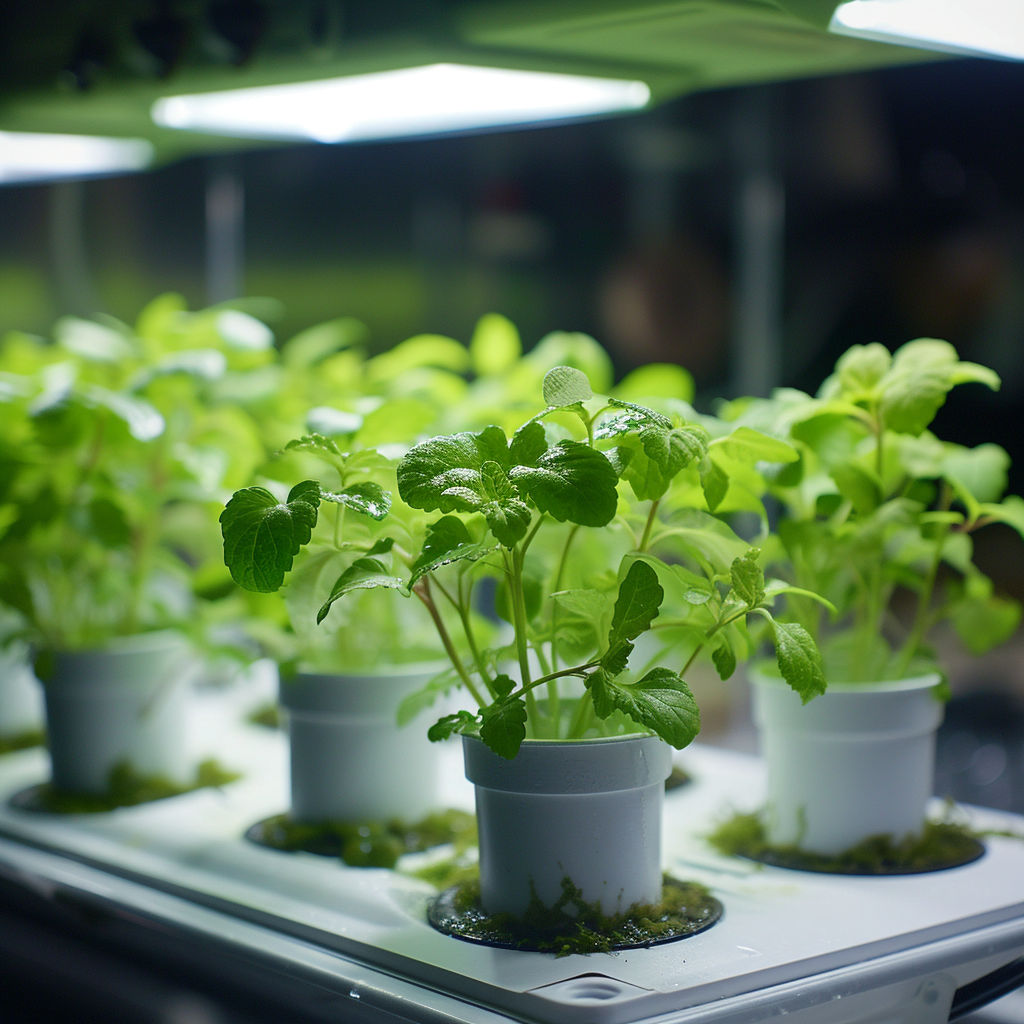
DWC Grow Mediums and Plant Support
In DWC, grow mediums serve primarily as support to hold plants in place rather than as a rooting material. Perlite, expanded clay pellets, and Rockwool are common choices.
Look for mediums that drain well and provide some oxygenation. Reusable options like lava rock, LECA, or mesh pots work nicely. Avoid mediums like coco coir that stay too wet.
Plant support collars, mesh pots, or vertical towers make it easy to position plants above the reservoir. Look for sturdy net cups and baskets that allow roots to freely dangle while stabilizing the plant.
DWC System Maintenance
Like any hydroponic system, DWC requires regular maintenance and monitoring for optimal plant health and production. Follow these maintenance best practices:
- Check reservoir temperature, pH, and nutrient PPM/EC levels every 2-3 days. Top off tank with fresh solution as needed.
- Replace entire reservoir solution weekly to replenish nutrients and prevent salt buildup.
- Clean air stones/tubing monthly to prevent clogs which reduce oxygen levels.
- Clean and disinfect system thoroughly between crop cycles to prevent disease carryover.
- Remove any debris or dead plant material from reservoir immediately to prevent root rot issues.
- Monitor closely for any signs of nutrient deficiencies, pH stress, root slime, discoloration, smells.
- Keep grow lights, pumps, air stones, and other equipment in good working order. Have spare parts on hand.
Consistent system monitoring enables you to respond quickly to any issues before they become major problems. A well run DWC system can last for many years producing abundant harvests.
Scaling Up a Commercial Deep Water Culture System
For commercial cultivation, DWC systems can be scaled up in size by following similar principles as small setups while managing the increased complexities. Here are some tips:
- Use large 100+ gallon opaque containers or custom built tanks to allow massive root growth.
- Maximize oxygenation by running multiple air pumps and diffusers.
- Use heavy duty pumps that can handle larger reservoirs and higher nutrient concentration.
- Monitor conditions via electronic probes and dosing systems to dial in nutrients and pH levels.
- Install reserve tanks and automated water top offs for longer runtimes between solution changes.
- Create ease of access to plants for pruning, training, and harvesting produce.
- Implement a sterilization system between crops such as UV treatment, beneficial bacteria, or peroxide.
- Design redundancy into critical components like pumps, controls, and lighting to avoid catastrophic failures.
- Scale vertically with racks to maximize limited greenhouse/indoor space.
With attentive operation and testing, commercial DWC can deliver extremely high yields per square foot. The rapid growth speed and heavy fruiting or green production provides a very efficient use of space, energy, and labor.
Conclusion
Deep water culture hydroponics provides a high performance growing system for many vegetables and herbs. With proper set up and maintenance, DWC can deliver rapid, abundant harvests in limited space without the need for extensive growing media or soil. This guide covered how DWC works, system components, plant selection, operation and scaling. Pay close attention to oxygenation, water temperature, and pH to get the best results. DWC is an excellent method for both small-scale and commercial hydroponic production.
